
Several species of honeysuckle found in NY are characterized as invasive, including: Morrow’s honeysuckle (Lonicera morrowii), Tatarian honeysuckle (Lonicera tatarica), Amur honeysuckle (Lonicera maackii), and Japanese honeysuckle (Lonicera japonica). To the non-botanist, native and invasive non-native honeysuckles appear very similar. One way to distinguish between native and invasive honeysuckles is by looking at the stems – native honeysuckles have solid stems while invasive honeysuckles have hollow stems.
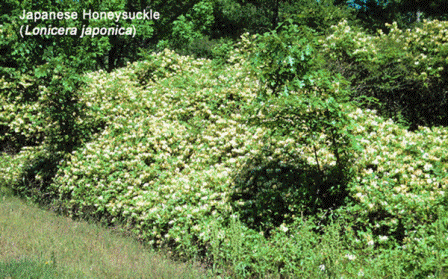
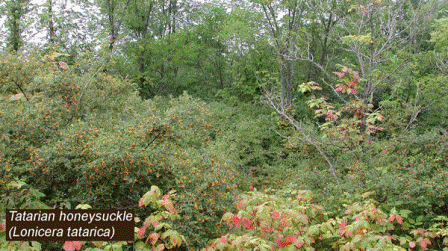
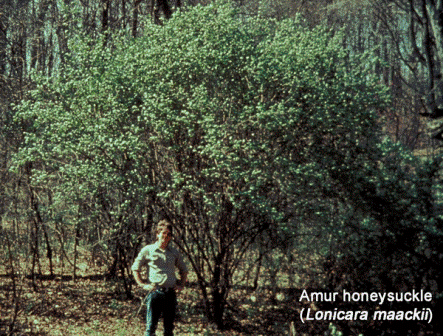
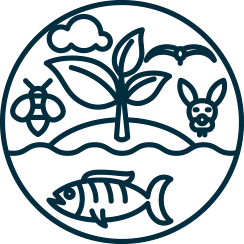
All four species are successful invaders of a similar range of habitats, including: abandoned fields; pastures; early successional, open canopy, and planted forests; along the edge of woodlots; floodplains; highway, railway and utility rights-of-way; open disturbed areas; vacant lots; edges of lawns; and, gardens. L. japonica can also be found in agricultural fields. All four grow best in full sun; L. japonica is the most shade-tolerant of the four, with L. tatarica and L. maackii being semi-shade tolerant.
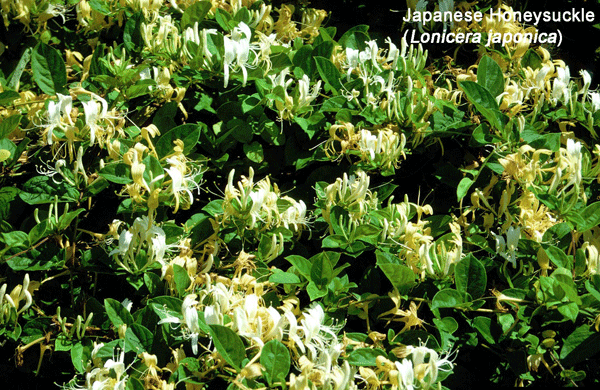

L. tatarica is native to Central Asia and Southern Russia and is believed to have been introduced into North America for ornamental purposes as early as the 1750s. L. japonica, – a native of China, Japan and Korea – was introduced for horticultural purposes in 1806 on Long Island; it was widely distributed as a garden plant through the early-1900s when it was finally recognized as a weed. L. maackii, also native to China, Japan and Korea, was introduced as seeds to arboreta throughout the U.S. in the late-1800s to determine whether the plant would grow in North America. This species of honeysuckle was utilized as a soil stabilization and wildlife planning until the mid-1980s and is still available for sale on-line. L. morrowii, a native of Japan, was imported to Massachusetts in the 1860s and was later released as an ornamental. All four species have escaped cultivation and are easily spread by birds.

L. morrowii, L. tatarica, and L. maackii), are perennial shrubs; L. japonica is a perennial woody vine (although its leaves can remain green throughout mild winters). The shrub forms range from 6 to 15 feet in height, while vines can reach 30 feet in length. The egg-shaped leaves range from 1 to 3 inches in length and are arranged oppositely along stems. Invasive honeysuckles begin flowering from May to June and bear small (less than 1 inch long), very fragrant tubular flowers ranging from creamy white through various shades of pink to crimson. L. morrowii and L. tatarica produce ¼ inch red berries from mid-summer through early-fall; L. maackii’s dark-red berries don’t ripen until late-fall; L. japonica produces dark-purple or black berries in the fall. Stems of all four are hollow.
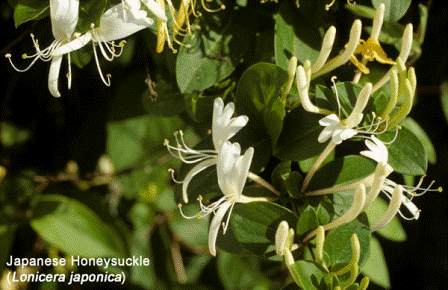
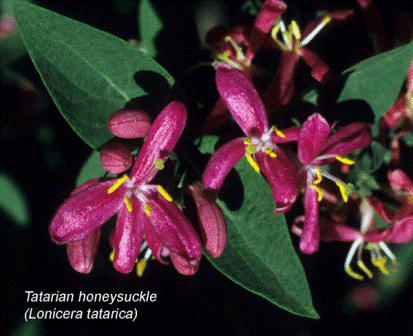
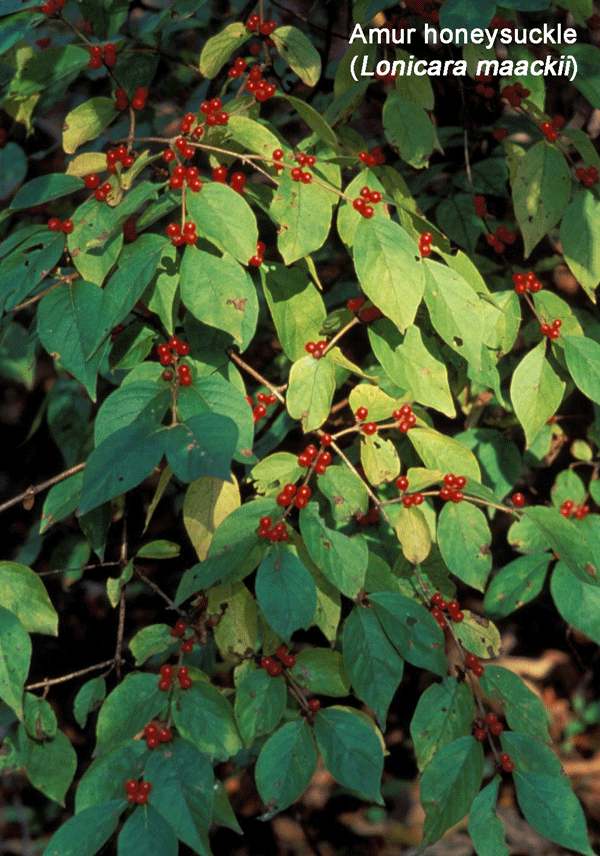

All three species can form very dense populations that can outcompete and suppress the growth of native plant species. These dense stands suppress the growth of other native species. L. maackii leafs out very early in spring, giving it a competitive advantage over native plants. L. japonica leaves are semi-evergreen allowing the plant to grow longer into the winter and giving it a competitive advantage over native vegetation. It shades out understory growth preventing the success of native understory plants and tree seedlings. Its vigorous vine growth covers native trees; the weight of the vine growth can bring down weak trees. By decreasing light availability to the understory, these invasive honeysuckles can alter habitats by depleting soil moisture and nutrients. The invasive honeysuckle berries do not contain the amount of fat and nutrients present in native honeysuckle berries; eating large amounts of the less nutritious invasive berries rather than native berries can have negative impacts on migrating.

Because these plants spread rapidly via birds eating seeds, control should be started in late-summer or early-fall before seeds are ready to be dispersed. In early stages of invasion, or in cases where populations are at low levels, hand removal of honeysuckle seedlings or young plants is a viable option when repeated annually. Systemic herbicides can be utilized in cases of heavy infestation. Specific state rules should be followed and the appropriate (low environment impact, legally labeled for control of these plants) herbicides should be used. For invasive honeysuckles growing in open habitats, prescribed burning may be an effective control alternative.
This map shows confirmed observations (green points) submitted to the NYS Invasive Species Database. Absence of data does not necessarily mean absence of the species at that site, but that it has not been reported there. For more information, please visit iMapInvasives.
